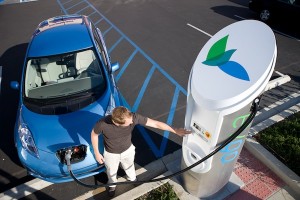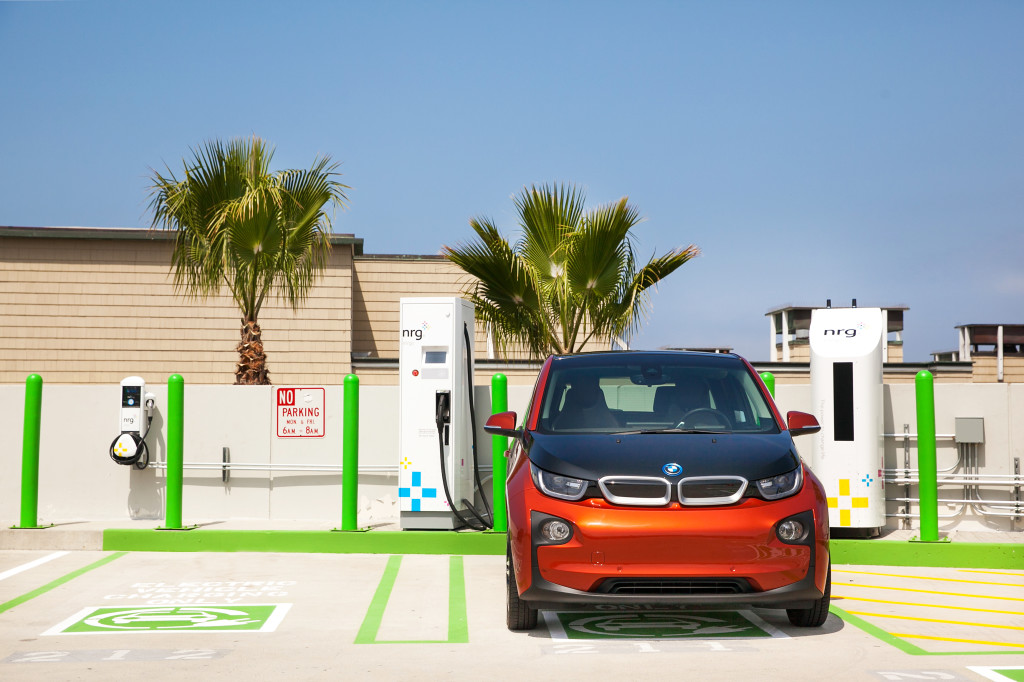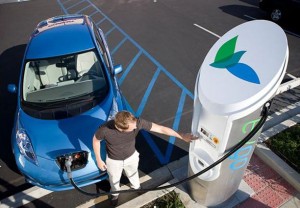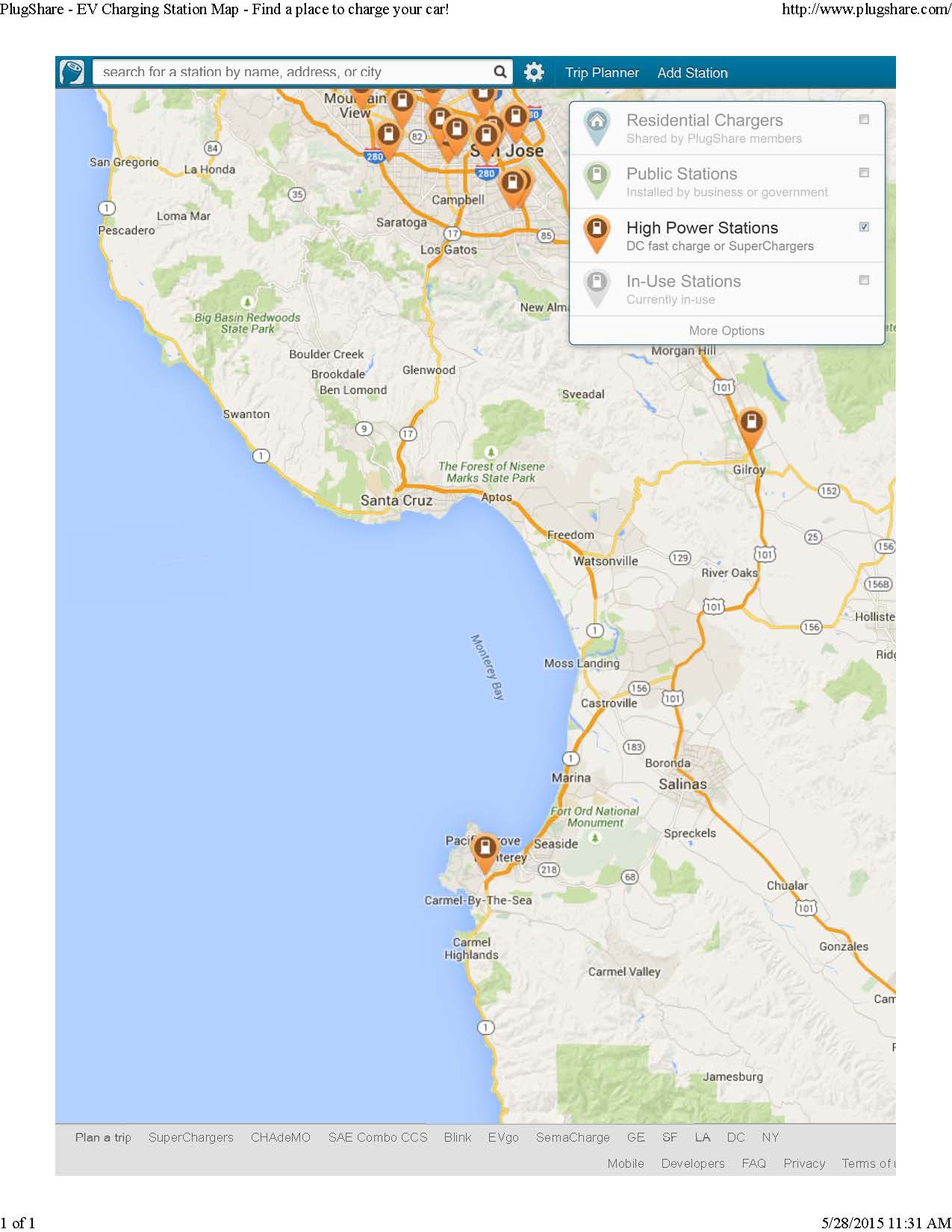In the wake of the VW emissions-cheating scandal, the proposed settlement involves allowing VW to invest heavily in electric vehicle infrastructure, per E&E News [paywall]:
Under the settlement, Volkswagen AG will have to invest $2 billion over 10 years to increase access to EVs by supporting charging infrastructure and public outreach, with $800 million allotted to California. ChargePoint Inc. and California lawmakers including U.S. Rep. Anna Eshoo (D) and state Senate President Pro Tem Kevin de León (D) argued that the special fund lacks oversight and risks stifling the EV-charging industry.
California has some experience with these kinds of settlements, and it’s not good. As I’ve written before, the state settled with NRG’s parent electricity company for defrauding California ratepayers during the phony electricity crisis and rolling blackouts at the turn of this century.
As “punishment,” NRG got to spend $100 million on a new line of business: EV charging infrastructure. The settlement terms though have never been followed, and the California Public Utilities Commission took over a year just to hire an auditor to find out what’s going wrong. The audit hasn’t even begun yet, a year-and-a-half later.
So if regulators and the court go down this path with VW, let’s hope they put real teeth into monitoring and enforcement of the settlement terms. Otherwise this deal won’t end up so well for taxpayers and the defrauded.
California regulators have been busy approving “pilot” projects for utilities to start paying for EV charging infrastructure, at significant ratepayer expense. Last week, they approved PG&E’s controversial plan, which had the blessing of environmentalists and unions, while ratepayer advocates and the San Francisco Chronicle cried foul. It will target a deployment of 7,500 level 2 charging ports and 100 DC fast-charging ports.
And with the passage of SB 350 last year, utilities will be entering the EV charging game big time in the coming years. These pilots are just the initial salvo.
But the state had already required $100 million in EV charging investment from NRG/eVgo as part of a legal settlement in 2012. That company has been badly behind schedule on getting these stations up and running, leading regulators to call for an audit over a year ago.
The status of the audit? Well, I emailed the California Public Utilities Commission recently to find out, and they told me they just hired an auditor to do this work at the end of February. No explanation was offered as to why that took the agency a whole year to do so.
So while regulators are busy ushering utilities into the EV charging world, they’re asleep at the wheel monitoring the state’s $100 million investment already in the works. Not a good sign as utilities start spending big ratepayer bucks on EV charging.
 Lots of recent news on EV infrastructure:
Lots of recent news on EV infrastructure:
- The California Public Utilities Commission approved a major new utility investment in EV charging infrastructure this week, allowing San Diego Gas & Electric to install charging stations at “up to 350 businesses and multi-family communities throughout the region, with 10 chargers at each location for a total of 3,500 separate chargers,” per Clean Technica. At least 10% of the chargers will be in disadvantaged communities. It’s a step in the right direction, as electric utilities probably provide the best hope for getting adequate infrastructure up and running for EVs in the long run.
- The California Energy Commission is finally soliciting bids to put fast chargers in key travel corridors in California. Some of the prime routes include I-15 north of Victorville to outside of Las Vegas, I-10 from Beaumont past Palm Springs, and I-80 from Auburn out to Lake Tahoe. It’s about time.
- Tesla is killing it on their proprietary network of supercharger sites, adding about 50% more chargers in 2015 alone, per Green Car Reports. The company is on its way to becoming a vertically integrated monopoly. Imagine if GM owned all the great cars, plus all the gas stations and dealerships. That’s the path Tesla is on.
- But sadly, NRG is still lagging on their implementation of the $100 million settlement with the California Public Utilities Commission. The audit of their performance, announced over a year ago by the commission, has so far failed to materialize. I called the agency for a status update a few months ago and never heard back. In some ways, their failure to meet the terms of the agreement has created the need for more public dollars to go to this charging infrastructure investment, while Tesla’s success makes NRG’s slow progress look even worse by comparison.
In general, the infrastructure news is positive. But sales of plug-in electrics are still lagging due to cheap gas, failure to introduce new models with better range, and poor marketing. More work to be done, but this all-in-all a good start.
Yesterday I drove my 85-mile range Nissan LEAF about 50 miles to a destination and decided to fast-charge it there for the return trip. I checked Plugshare.com and found an eVgo fast-charge station (their “Freedom Station”), relatively conveniently located at a mall near my destination. Here’s what a typical one looks like:
 You may recall that eVgo (really energy company NRG) got into this charging game as a “punishment” for having defrauded ratepayers with rolling blackouts in the early part of the last decade. The settlement with the state called for the company to spend $100 million in charging infrastructure, but the company has not been able to deliver and is now subject to a California Public Utilities Commission audit to determine what’s going wrong.
You may recall that eVgo (really energy company NRG) got into this charging game as a “punishment” for having defrauded ratepayers with rolling blackouts in the early part of the last decade. The settlement with the state called for the company to spend $100 million in charging infrastructure, but the company has not been able to deliver and is now subject to a California Public Utilities Commission audit to determine what’s going wrong.
Now in my case yesterday I found that there was in fact a station I could access. When I got there, I was pleased with two things: first, the charger was unoccupied, and second, it was actually working.
But here’s where eVgo and its state overlords need improvement. First, there’s no easy way to pay if you’re not part of the eVgo “network” — a monthly subscription service. Otherwise, you have to call a 1-800 number and then work your way to a person to manually take down your credit card number like it’s 1995.
Could you imagine the same setup if you went to a gas station? What if you couldn’t fill up your car at Chevron unless you were a “member”, or else you’d have to jump through hoops? Solution: make it simple. Let drivers simply swipe their credit card and be done with it. Ditch these bogus “network” plan requirements.
Second, the pricing. I was informed by the customer service rep taking my credit card that it would be a flat $10 charge. I only needed an additional 40% charge though to get back home without stress. So why should I pay $10 like I’m getting a full battery charge? Why not pay by the kilowatt hour, like you would at a gas station (paying by gallon)?
California and the charging companies need to do much better than this if they hope to encourage EV adoption and public charging. SB 350 now authorizes utilities to get into this charging game at ratepayer expense. But if the result is simply enabling more of these dysfunctional business models, then it will be money wasted.
Okay, this is a subjective rant. But it points to a larger failing in California’s electric vehicle infrastructure. This past Memorial Day weekend, I was set for a short vacation in Monterey, a significant regional destination about 70 miles from San Jose, south of the Bay Area.
I wanted to drive my Nissan LEAF, which gets about 80 miles range on flat elevation. From the East Bay where I live, it would require one fast-charge (80% battery recharge in about 20 minutes) just south of San Jose, which is about 60 miles from my home.
But in looking at the charging map, there are no fast chargers south of San Jose — unless you’re lucky enough to drive a Tesla of course, then you can charge in Gilroy. The fast chargers in San Jose would leave me with a white-knuckle drive to Monterey, given the elevation and distance.
Here’s a screenshot of the Plugshare.com map, with a Tesla fast charger in Gilroy but otherwise a no-man’s land of fast-chargers until you get to Carmel (about 10 miles further south of Monterey):
Why haven’t EV charging companies fixed this missing link? This route is exactly the situation for a series of fast-chargers, given that you have a major regional destination about 70 miles from a densely populated urban area.
This is why California policy makers are now auditing eVgo, the company that benefited from a $100 million settlement back in 2012 to deploy a network of chargers around the state. I wrote about it recently, but the company’s progress has been dismal. EVgo has been focusing on money-making fast-charging sites in urban areas, rather than the Tesla approach of building a convenient network statewide to get people like me from a major urban area to a vacation destination.
I hope the audit and ensuing action means that critical corridors like the one to Monterey get the fast-chargers they need to encourage people to buy EVs. Otherwise, even with range improvements, EVs will largely be doomed to commuter status for the foreseeable future, requiring people to buy gas cars for destination trips.
 Back in 2000, rolling blackouts descended upon California and eventually cost Governor Gray Davis his job. The crisis was caused by deviant corporate behavior, and one of the companies involved, NRG, finally settled with the state in 2012 for damages related to its conduct. But instead of being punished, the California Public Utilities Commission allowed NRG to commit to spending $100 million on electric vehicle public charging infrastructure, essentially helping the company invest in a new business venture.
Back in 2000, rolling blackouts descended upon California and eventually cost Governor Gray Davis his job. The crisis was caused by deviant corporate behavior, and one of the companies involved, NRG, finally settled with the state in 2012 for damages related to its conduct. But instead of being punished, the California Public Utilities Commission allowed NRG to commit to spending $100 million on electric vehicle public charging infrastructure, essentially helping the company invest in a new business venture.
It was a controversial bargain, but the upshot for the state was a big injection of capital into badly needed electric vehicle infrastructure. With 65,000 electric vehicles now on the road in California, the competition is increasing for charging stations. The NRG settlement would result in at least 200 new publicly available fast-charging stations around the state, as well as wiring for 10,000 more charging stations in offices, homes, and other public and private spaces.
So how is implementation going? Not well. NRG’s new subsidiary to build these stations, eVgo, is way behind schedule, with only 13 fast-charging stations open out of the 200 that need to be ready by 2016, with 100 of those to be open by the end of this year under the settlement terms. The company cites the startup pains associated with trying to get new infrastructure built – finding amenable site hosts, upgrading local utility wiring and equipment, and clearing the necessary permits. They believe they will make up for lost time this year.
But much of the reason for the delay is the basic conflict of interest involved in this settlement, which allows eVgo to site charging stations in crowded, complicated, and suboptimal urban areas in order to maximize the company’s profits. To be truly effective, expensive fast-charging stations (which can repower a battery to 80% capacity in just 20 minutes) should instead be located between cities and popular destinations, replicating the interstate gas stations drivers rely on for longer trips. These sites allow drivers to extend the range of their all-battery vehicles when they’re driving between cities like San Francisco and Sacramento, Los Angeles and San Diego/Palm Springs/Santa Barbara, or Fresno to Bakersfield, to name a few. For a good example of successful (and speedy) fast-charger deployment, look no further than Tesla and its optimally located Supercharger network along well-traveled interstates (enabling even an all-electric cross-country road trip).
On the other hand, fast-charging stations in urban areas tend to be a waste of money and counter-productive. Most city visitors live or work within 20 or 30 miles, meaning that a full charge over a regular wall outlet at the home or office should be sufficient to get them into the city and back in a typical 85 mile-range electric vehicle. And if they do need to charge downtown, these drivers usually don’t need a 20 minute fast charge because they are there to work or shop for at least one or two hours anyway. For this time frame, a cheaper “Level 2” 240V station will do just fine. What’s worse, crowded downtown fast chargers often require drivers to wait in line, defeating the purpose of a “fast” charge.
So why doesn’t eVgo/NRG follow this more sensible interstate model instead of trying to site their stations in suboptimal urban areas? Part of the answer lies in the settlement, which prescribes regions of the state for deployment. But the larger problem is that the company has a business interest in trying to make money off these stations through repeat customer membership deals and from patronage at nearby retail options. That’s why the company is working with upscale businesses, like Whole Foods and Urban Outfitters, and selling membership deals to hook local drivers into subscribing and becoming captive customers who will shop near the stations. This is a waste of charging infrastructure and a probable money-loser for NRG to boot.
If California was serious about making NRG pay for its rolling blackout damages and truly benefitting electric vehicle drivers, state leaders would insist that the fast-charging stations go in interstate locations, a la Tesla, to facilitate extended range for all-battery electric vehicle drivers. These locations should be the first priority, and they should blanket the state between our cities, not within them, and certainly not next to the local Whole Foods.
Were NRG representatives to take that approach, they’d find it a lot simpler to get these stations installed and ready. Sure, it wouldn’t help the company’s bottom line as much, but it would best serve the electric vehicle drivers of California.



